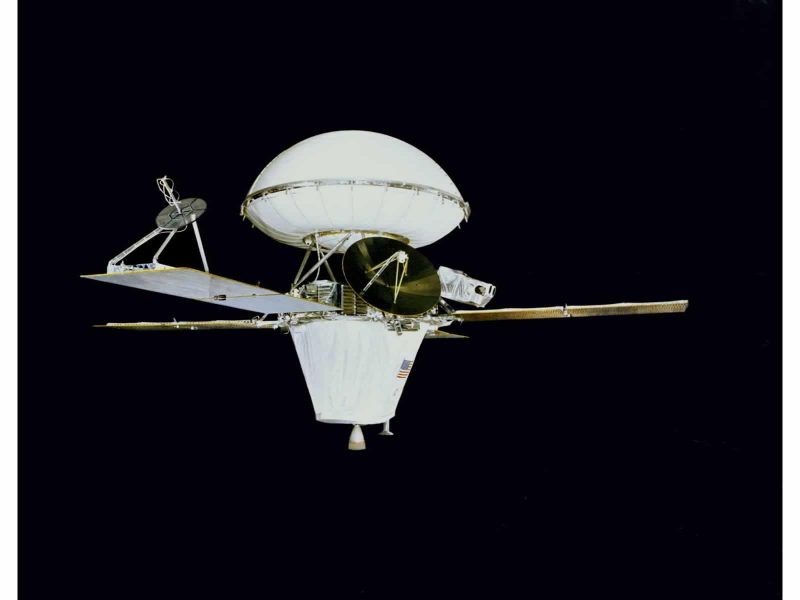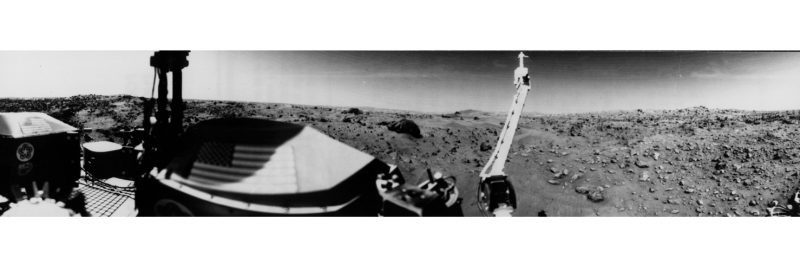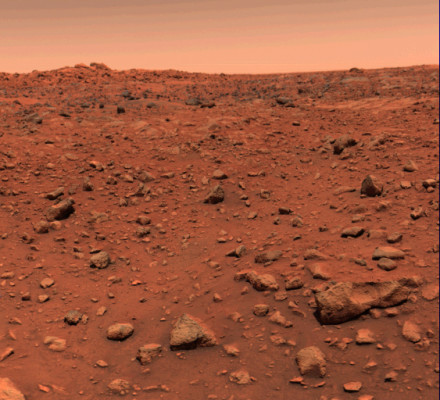Today, over a decade after the iconic Mars rovers Spirit (2004-2010), Opportunity (2004 – still active) and more lately – the most equipped and the biggest so far – Curiosity (2012) landed on the surface of the “Red Planet”, seeing an image of its surface is almost like seeing your friend’s new pictures on Facebook. NASA keeps uncovering the secrets of the planet with the help of the hard-working rover Curiosity and constantly surprises us with amazing photos of this distant landscape.
But 40 years ago, seeing an image captured on a distant World, wasn’t an everyday event. Back in the 1970’s, space exploration was still something relatively new. Space technology was in the first stages of development. Scientists were discovering new ways of sending their instruments in space and enthusiasm and curiosity for the unknown “alien” worlds were high as never before.

Besides the Moon, Earth’s faithful companion, people have always wanted to know more about other celestial bodies and especially about our closest neighbors in Space, such as Mars.
The first spacecraft that successfully landed on Mars was the Viking 1 lander and it happened on July 20, 1976. It was the first attempt by the United States at landing on Mars. This is the vessel that actually made the first clear photos from the surface of Mars. Viking 1 allowed humanity to see the surface of a whole new world. The Viking 1 Lander touched down in western Chryse Planitia (“Golden Plain”).
The lander had two cameras, three analyzes for metabolism, growth or photosynthesis, a gas chromatograph-mass spectrometer (GCMS), an x-ray fluorescence spectrometer, pressure, temperature and wind velocity sensors, a three-axis seismometer, a magnet on a sampler observed by the cameras, and various engineering sensors.
Transmission of the first surface image began 25 seconds after landing and took about 4 minutes. During these time, the lander activated itself. It erected a high-gain antenna pointed toward Earth for direct communication and deployed a meteorology boom mounted with sensors. This is what the Viking saw when it opened its eyes for the first time:

In the next 7 minutes, Viking 1 started to capture and transmit the second picture, a 300° panoramic scene of the planet’s surface. This is the first panoramic photo taken from Mars and it shows a beautiful late afternoon landscape, measuring by the brightness of the sun in the right angle of the picture. A perfect Mars sunset. In this beautiful historical photo that the NASA spacecraft took you can see large rocks and sand dunes scattered all around the area.

On the day after the landing, the first color picture of the surface of Mars was taken. This was the picture that gave Mars it’s famous (and wrong) nickname, “The Red Planet”.

The panoramic photo that is shown below is taken by Camera 1 on July 23, 1976. The horizon is approximately 3 kilometers (2 miles) away. The left and right thirds of the picture are of the same area that was captured in the first panoramic photo by camera 2 on the first day. The middle third reveals a part of the Martian Surface that was not seen on the first panorama. You can also see the late afternoon sun with some layers of clouds. Two very large rocks are visible in the middle of the picture. The one that is closer is estimated to be 3 meters (10 feet) in diameter, 8 meters (25 feets) away from Viking 1. The white antenna visible at the center of the picture is the meteorology boom of the spacecraft.The rocks scattered closer to the lander are about 10cm (4 inches) across.

This photos and the experiments that Viking 1 made, can not compare with the quality of the work that Curiosity is doing today, but nevertheless, their importance is not at all insignificant. They are the inspiration for all the people that push the limits of space exploration today and, who knows, maybe one day we’ll see these pictures on a postcard from a Mars Colony…
